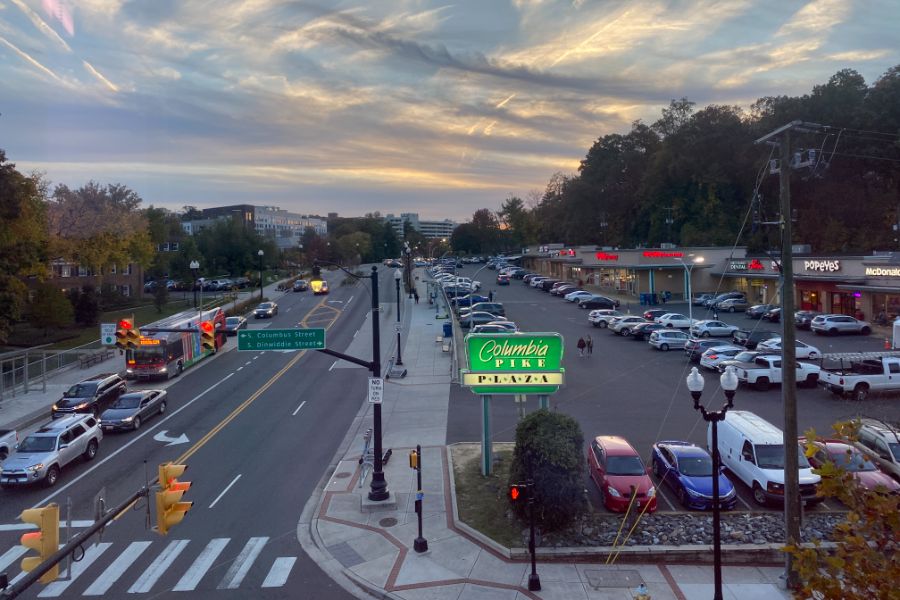Development on Columbia Pike is guided by the Form Based Code (FBC). The zoning ordinance is in two parts, one applying to commercial properties (for example, strip malls, gas stations, office buildings, and parking lots) right along the Pike and the other, the Neighborhoods Form Based Code (N-FBC) to the residential properties along the Pike. The FBC allows an additional option for redevelopment, along with existing by-right zoning and the site plan process. The FBC and N-FBC do not extend to the single-family home neighborhoods surrounding the Pike.
As the name suggests, the code governs the form of the buildings, regulating height, set-back, access alleys, certain architectural requirements, and other physical attributes. Height is set by the particular location, whether it is Pike frontage or side street frontage, and tapers down on the back side to mitigate impacts on adjacent neighborhood buildings. Minimum parking standards apply. For commercial areas, it requires ground floor retail. The code was recently amended to allow a greater variety of retail uses, like breweries, maker spaces, and pet care.
The FBC operates by setting out the requirements in advance. If the developer meets those requirements (a lengthy detailed checklist), the proposed building will be approved. This provides greater certainty and efficiency for the developer, for the neighborhoods, and for the county as the regulator, avoiding the lengthy site-plan process.
Certain areas are dedicated as public spaces, such as Penrose Square, Centro Arlington’s plaza, and Arlington Mill Community Center Plaza. At the Avalon building (at Walter Reed), a public parking deck has been provided through county investment.
The Neighborhoods FBC is designed to preserve the affordability of the roughly 6000 market-rate affordable apartments along the Pike. In general, “affordable housing” on the Pike is defined as affordable to a family earning 60% of the Area’s Median Income. These apartments were affordable at that level when the N-FBC was developed. For these residential areas, an additional density of three or four times the current number of apartments on the property is allowed under the N-FBC if, and only if, the same number of apartments as the existing units are legally committed to affordable rents for 30 years or longer. For example, on a site with 100 affordable units, 400 market rate units could be added, as long as 100 units (new or preserved) are dedicated at affordable rents. (This is a simplified explanation—the actual ordinance is more complicated.) Height limits and other physical size limits still apply. The additional density of market-rate homes makes the preservation of affordable homes financially viable.
So far, about 200 affordable units have been preserved through the N-FBC, another 229 have been added on the property of another affordable building, and 1334 affordable homes in the Barcroft Apartments are being preserved as affordable through the N-FBC and low-interest loans from Arlington County and Amazon.
This article is a contribution of John Snyder, Columbia Pike Partnership Executive Board Member
For more information about the Form Based Codes, visit Columbia Pike Form Based Code and COLUMBIA PIKE NEIGHBORHOODS SPECIAL REVITALIZATION DISTRICT FORM BASED CODE.

